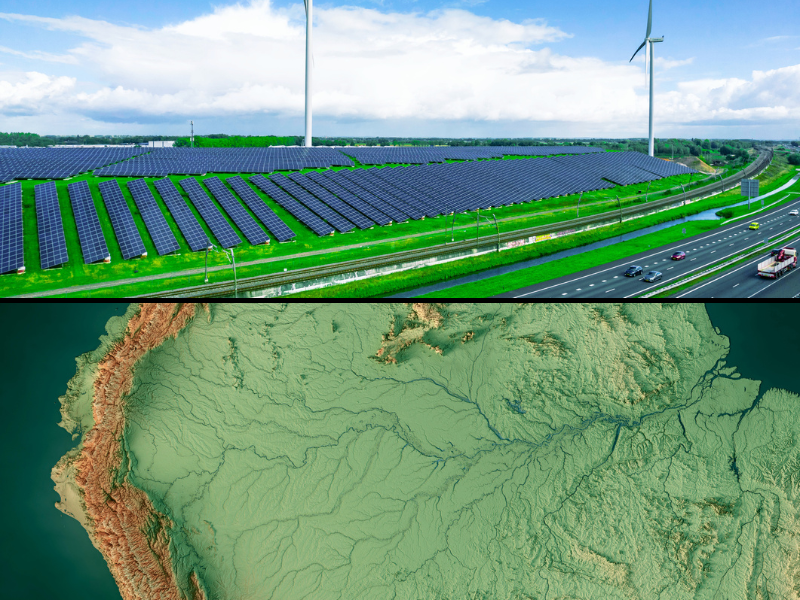Many scientists, policymakers, and engaged citizens have become concerned over the possibility that manmade greenhouse gas emissions, in particular carbon dioxide (CO2), may be causing dangerous climate change. A primary reason for this public alarm is a series of reports issued by the United Nations’ Intergovernmental Panel on Climate Change (IPCC).
In its climate models, however, the IPCC does not account for several important forcings and feedbacks in the climate system and how they affect the observed climate. Some of these overlooked forcings and feedbacks may even have the potential to offset completely the radiative forcing expected from rising atmospheric CO2.
A report from the Nongovernmental International Panel on Climate Change (NIPCC), an independent group of some 50 scientists from 15 countries, titled Climate Change Reconsidered II: Physical Science, summarizes a large body of research indicating the model-derived temperature sensitivity of Earth accepted by the IPCC is too large and negative feedbacks in the climate system reduce that sensitivity to values an order of magnitude smaller.
For example, methane and nitrous oxide are two gases that can affect climate. The IPCC has taken both of these factors into account and used them in its models to predict temperature increases. The research examined in CCR-II found atmospheric methane observations over the past two decades are far below the values projected by the IPCC in each of its Assessment Reports. The IPCC’s temperature projections, which incorporate this inflated influence, should be revised downward to account for this discrepancy.
Other negative feedbacks on climate sensitivity that are either discounted or underestimated by the IPCC include increases in low-level clouds in response to enhanced atmospheric water vapor, increases in ocean emissions of dimethyl sulfide (DMS), and the presence and total cooling effect of both natural and industrial aerosols.
The factors affecting the climate are not limited to those mentioned here. Several other important negative forcings and feedbacks exist in nature, about which little is known or acknowledged by the IPCC. Such forcings and feedbacks have been shown by multiple scientific studies to significantly influence Earth’s climate to a degree comparable to that of projected anthropogenic-induced global warming. Until the IPCC includes such factors, its model output should not be used to guide public policy formulation until they have been validated and shown to have predictive value.
The above introduction is based on text from Climate Change Reconsidered II: Physical Science and its Summary for Policymakers, published by The Heartland Institute for the Nongovernmental International Panel on Climate Change (NIPCC).
The following documents provide additional information about climate forcings and feedbacks.
Chapter 2 of Climate Change Reconsidered II
http://heartland.org/media-library/pdfs/CCR-II/Chapter-2-Forcings-and-Feedbacks.pdf
In Chapter Two of Climate Change Reconsidered II: Physical Science, scientists Craig Idso, Tim Ball, and Tom Segalstad review important forcings and feedbacks in the climate system. Failure of the models to account properly for the influence of these forcings and feedbacks further erodes confidence in the model projections of climate.
Summary for Policymakers of Climate Change Reconsidered II
http://heartland.org/media-library/pdfs/CCR-II/Summary-for-Policymakers.pdf
The IPCC claims to know, apparently with rising certainty over time, that “most of the observed increase in global average temperatures since the mid-20th century is very likely due to the observed increase in anthropogenic greenhouse gas concentrations” (IPCC AR4 SPM, p. 10). This Summary for Policymakers summarizes and interprets Climate Change Reconsidered II, a major scientific report that refutes this claim.
Potential Biases in Feedback Diagnosis from Observational Data: A Simple Model Demonstration
http://heartland.org/policy-documents/potential-biases-feedback-diagnosis-observational-data-simple-model-demonstration
Feedbacks are widely considered to be the largest source of uncertainty in determining the sensitivity of the climate system to increasing anthropogenic greenhouse gas concentrations, yet the ability to diagnose them from observations has remained controversial. In this paper published in 2008 in the Journal of Climate, Roy W. Spencer and William D. Braswell provide a simple model to demonstrate any non-feedback source of top-of-atmosphere radiative flux variations can cause temperature variability, which then results in a positive bias in diagnosed feedbacks.
Modeling Climatic Effects of Anthropogenic Carbon Dioxide Emissions: Unknowns and Uncertainties
http://heartland.org/policy-documents/modeling-climatic-effects-anthropogenic-carbon-dioxide-emissions-unknowns-and-uncer
In this paper published in Climate Research in 2001, Willie Soon, Sallie Baliunas, Sherwood Idso, Kirill Kondratyev, and Eric Posmentier review the common deficiencies in general circulation model (GCM) calculations of atmospheric temperature, surface temperature, and precipitation and their spatial and temporal variability. These deficiencies arise from complex problems associated with parameterization of multiple interacting climate components, forcings, and feedbacks, involving especially clouds and oceans.
Why the Climate Models Are Wrong
http://news.heartland.org/newspaper-article/2013/08/12/why-climate-models-are-wrong
Writing in the Heartlander digital magazine, Steve Goreham argues climate science is in turmoil. Contrary to predictions by the world’s leading climate models and despite rising levels of atmospheric carbon dioxide, global surface temperatures have been flat for 16 years. Goreham explains how and why the climate models went wrong.
Models Predicted Too Much Warming, New Data Show
http://news.heartland.org/newspaper-article/2013/06/15/models-predicted-too-much-warming-new-data-show
Writing in the Heartlander digital magazine, Heartland Institute Senior Fellow James M. Taylor discusses new data showing climate models used by the United Nations’ Intergovernmental Panel on Climate Change and other climate groups to predict future temperatures have failed miserably at predicting climate in recent years.
Environmental Effects of Increased Atmospheric Carbon Dioxide
http://heartland.org/policy-documents/environmental-effects-increased-atmospheric-carbon-dioxide-0
This review of the research literature by Arthur B. Robinson, Noah E. Robinson, and Willie Soon, published in the Journal of American Physicians and Surgeons in 2007, found increased levels of atmospheric carbon dioxide during the twentieth and early twenty-first centuries have produced no deleterious effects upon Earth’s weather and climate. Predictions of harmful climatic effects due to future increases in hydrocarbon use and minor greenhouse gases like CO2 do not conform to current experimental knowledge. The environmental effects of rapid expansion of the nuclear and hydrocarbon energy industries are also discussed.
Nothing in this Research & Commentary is intended to influence the passage of legislation, and it does not necessarily represent the views of The Heartland Institute. For further information on this and other topics, visit the Environment & Climate News Web site at http://news.heartland.org/energy-and-environment, The Heartland Institute’s Web site at http://heartland.org, and PolicyBot, Heartland’s free online research database, at www.policybot.org.
If you have any questions about this issue or The Heartland Institute, or would like a scientist to testify in your state, contact Heartland Institute Policy Analyst Taylor Smith at [email protected] or 312/377-4000.


